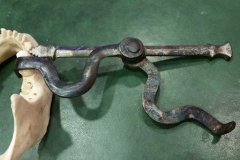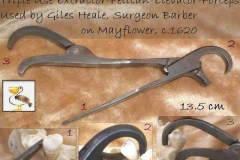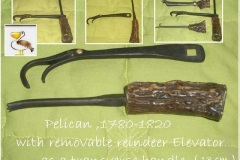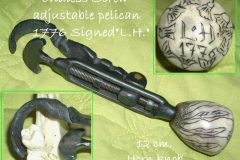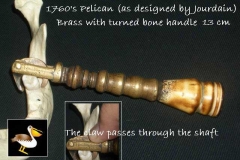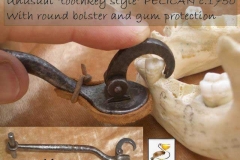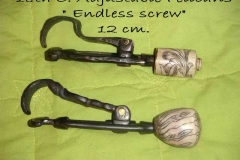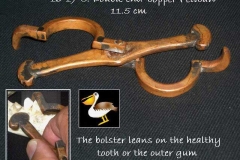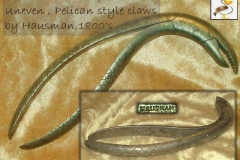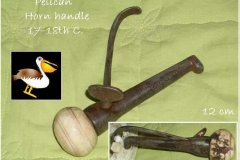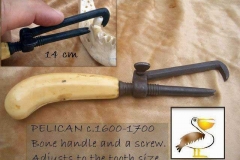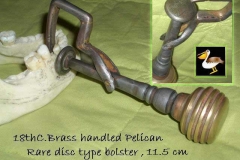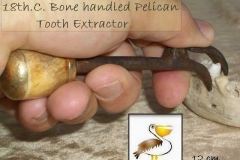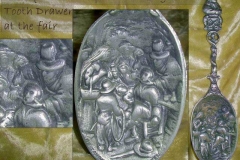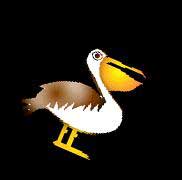 Antique dental extractors fall into 6 groups- forceps, levers, elevators, pelicans, toothkeys, screws.
Antique dental extractors fall into 6 groups- forceps, levers, elevators, pelicans, toothkeys, screws.
Pelican tooth extractor was first mentioned in 14th. C. by an important french surgeon Guy de Chauliac ( 1300-1368), who most probably invented it.
Guy de Chauliac was a key figure in dental history and was the first to introduce the term “Dentatores” for practitioners specializing in dentistry.
The instrument received its name because of it’s resemblance to the bird’s beak.
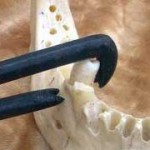 The device consists of 2 hinged arms: the first – a straight lever which was applied as a fulcrum against the soft outer gum. The second – a claw which was engaged over the crown of the tooth. The mode of action was to lever the tooth sideways out of the socket .
The device consists of 2 hinged arms: the first – a straight lever which was applied as a fulcrum against the soft outer gum. The second – a claw which was engaged over the crown of the tooth. The mode of action was to lever the tooth sideways out of the socket .
Unless the tooth was very mobile, it usually came out with a chunk of a jaw bone, causing a lot of damage, pain and even death .
Complex and advanced variations of this instrument were still used as late as 1860 -s .
חולצי השיניים העתיקים מתחלקים למספר קבוצות : צבת, פליקאן, מפתח שן, מניף ובורג.
גי דה שוליאק ( Guy de Chauliac ( 1300-1368 , המנתח הצרפתי המפורסם במאה ה-14, היה הראשון שתיאר את הפליקאן וייתכן שהוא אף המציא אותו. הפליקאן קיבל את שמו עקב דמיונו למקור הציפור שקנאי -Pelican .
למכשיר היו 2 זרועות- ישרה ומכופפת. הזרוע הישר של המכשיר נשען על גבי החניכיים והזרוע המכופף- חלץ את השן, לרוב יחד עם חלק מהלסת. אין ספק שהפליקאן גרם נזק רב, כאב ולעתים גם מוות. גרסאות מורכבות ומתקדמות של פליקאן היו בשימוש עד כ- 1860.
